








This journal traces the geological thread of sand, back in time and from source to sea, to make a deepmap of the San Franciscan sandshed. This map is made with words. It shares my understanding of the sand-cycle and the processes, people, and places that are involved & entangled with the journey of sand as it makes its way to 1 small stretch of California coastline.
Sand is a language lost to the built environment. What lies within the poured liquid strata of concrete, this vague-ish grey geological layer that covers a city that was once a rolling range of sand dunes - from Ocean Beach to the Financial District?
Along the way you will find Geopathic Tendenciesa series of suggestions for ways to move, sense & embody in relation to geological processes -geopathic mimicry as an attempt to build geological empathy.
You’re invited to enact each Geopathic Tendency in your own time. Some are long - maybe you can make an audio recording of these instructions - so you can close your eyes, listen, and follow along presently.

Visit the headwaters of a river that you know (via google earth)
Have a look around & print out some pictures (10-100+) of the rocks, hills, land, & mountains around the headwaters.
Close your eyes to see that this big place erodes slowly & the river carries it.
Cut the photos into confetti somehow, throw the bits forth.
Let it flow & fall all around your living room. Let it eddy & swirl for one week.
What patterns & movements do you notice?


The snow melts all summer in cascading rivers and waterfalls -- running tears down the mountains in the Ritter Range, as they’re map-named now. The snow melts just before winter comes again -- slow granite transforming and morphing at the million year scale by other slow-forced companions.
Trees break apart rock at the roots, growing steadily, weakening walls. The lichen assemblages disintegrate stone, while water and ice create fissures, cracks, crumbles, tumbling landslides of boulders, and rocks, ground to stone, to pebbles, to sand, to clay, to silt, to an atmosperic condition.
All this melting and wearing away at stone, from here it is like a parking lot or polished countertops or really, in truth, it is like a mountain and those other things try their hardest at emulating the original. Copies. Loss of granited information with each polishing pass.
Erosion patterns emerge as the strata turns to sand. Granite smoothed, shimmered, slivered by millions of years, marked by crumbles of boulders, cascades of land, sedimented bit by bit to the river - the headwaters.
Banner Peak is the one in the range that looks quintessentially mountainish - triangular and prominent. Its speckled granite walls glossed with summer snowmelt rivuleting down into a meadow - an array of marshy islands in miniature.
Small pods of earth, moss, meadow grass, and wildflowers, bisected by streams of seasonal water, converge into a few larger creeks and waterfalls, unifying eventually into a release at Thousand Island Lake in California’s Sierra Nevada Mountains.
The air here is thin. At night, I sleep on the bed of soil and minerals that mountains made.


But really, the mountain is quartz, mustard feldspar,

a freckled skin of white and black glassy mica.

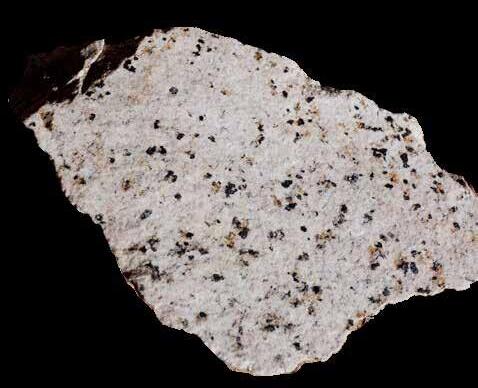


If you can, go to the Headwaters of the San mountain boulders that could really Find a boulder to wrap your body
Find a way to map your contours & With each breath your skin slowly speckles of grey, black, white, Soft skin, heavy body
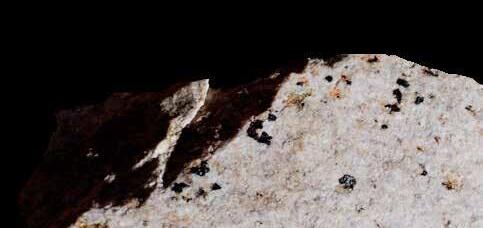
crossfading & stony
a tingling disintegration
Spend 10 minutes wrapped and breathing slow, body heavy, stony and still,
Joaquin River, or another place of get you in the mood. relate to ....
around its edges. edges to the boulder’s contours & edges. Close your eyes and breathe heavy, slow. shifts toward the color of rockcrystal fragments glint as they catch sun.
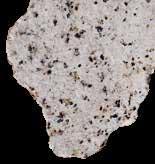
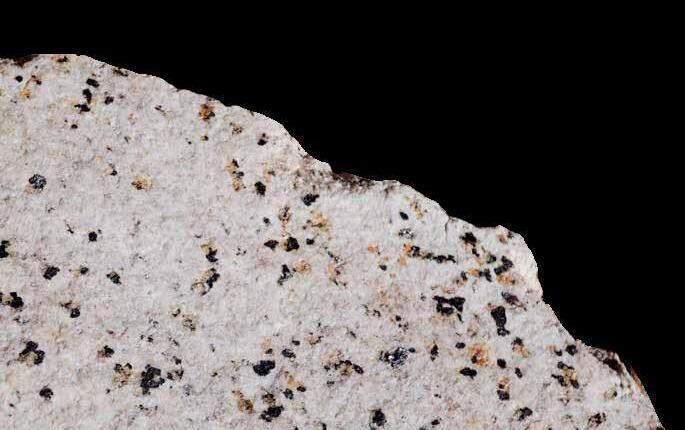
blended, geomimicked, incorporat-ed
warped like this... muscles grown heavy, each inhalation / exhalation is in timelapse. Many years go by in a breath.
Thousand Island Lake, at the base of Banner Peak, pools up and swells. The water can’t hold and it drains from the northeastern edge of the lake. This moment of release and relief is called the beginning -- the headwaters of the San Joaquin River. Together, the San Joaquin and Sacramento Rivers make up San Francisco’s sand transport system.
I walk out of this gateway, through the headwaters and back on a trail which traces the river for 8 miles or so. I watch its post-birth life -rushing, hard and fast on smooth rocks, cutting canyons in its wake.
Silently, granite boulders in the river are being worn to eventual sand and these, through a labor of transformation and transport will travel with the river as it empties into the San Francisco Bay.
Ocean Beach in San Francisco is fed 80% of its sand by the San Joaquin and the Sacramento Rivers.
I met with Patrick Barnard, a Coastal Geologist and Research Director of the Climate Impacts and Coastal Processes Team at the US Geological Survey in Santa Cruz, California. One of Patrick’s large projects involves looking at the rapid rates of erosion on the south end of Ocean Beach in San Francisco to create a picture, based on scientific evidence, of the whole sand transport system. Patrick told me things I probably learned once as a kid but carelessly forgot - like how the core of the Sierras are mostly granite which means that they were made of lava that cooled and mineralized under the surface of the earth, which eventually uplifted as a mountain range millions of years ago.
Also, he told me how weathering mountain faces break away to become smaller and smaller versions of themselves, until sand is the mobilized remains.
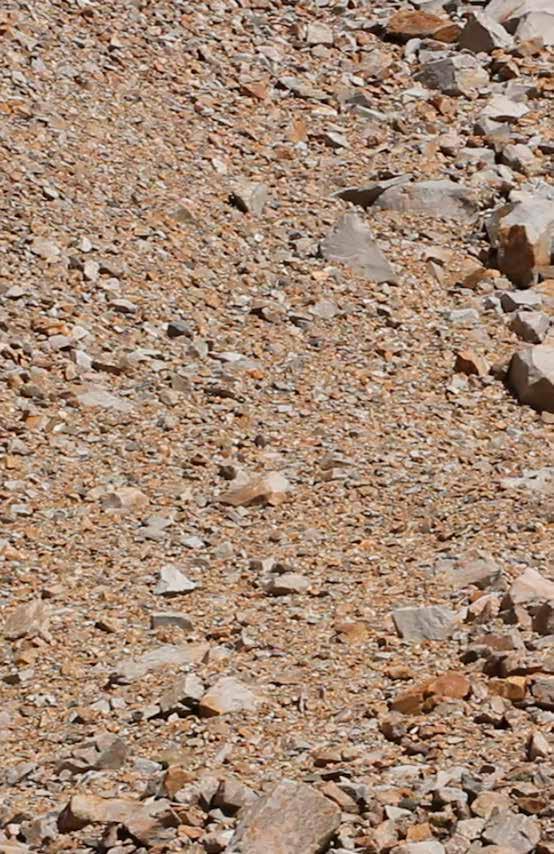
Patrick can trace a single grain of sand back to its point of origin by studying its own unique geochemical signature. Through a process of scientific care he can confirm that indeed, the mountains and Pleistocene-era glacial carving are responsible for laying down the sandy city of San Francisco and that yes, the majority of sand on Ocean Beach today is from the Sierra Nevada mountains in decay - by way of the San Joaquin and Sacramento Rivers.
He shared that, beyond slight and persistent
erosion, sometimes the sediment comes down from source to sea bountifully during big storms, of both the natural and manmade variety. During the Gold Rush years (1848 until the early 19th ce) hydraulic mining flushed 5 times the normal amount of sand and sediment into the San Francisco Bay. Those grains are still settling and shifting in the Bay today. At other times, all is slow and steady - geological realtime settles in.
“I think the story of sand in particular is one of a lot of very quiet periods of sediment sitting on a sand bar somewhere in a river and not doing much and being buried and then being exhumed and being entrained by the currents - maybe moving down another hundred meters or kilometers during an event,” says Patrick. But, since the flood of the Gold Rush era it has been more like a famine. He reminds me that lately: “it has really been a story of reduction of sand with all the flood control, damming, and bank protection all the way into the delta, all serving to reduce the amount of sand. In the bay itself, we’ve taken lots of sand out over the last century. We’ve mined sand for concrete, we do lots of dredging in the bay to keep ship channels open and for building dredge and fill construction all along the entire San Francisco Bay.”

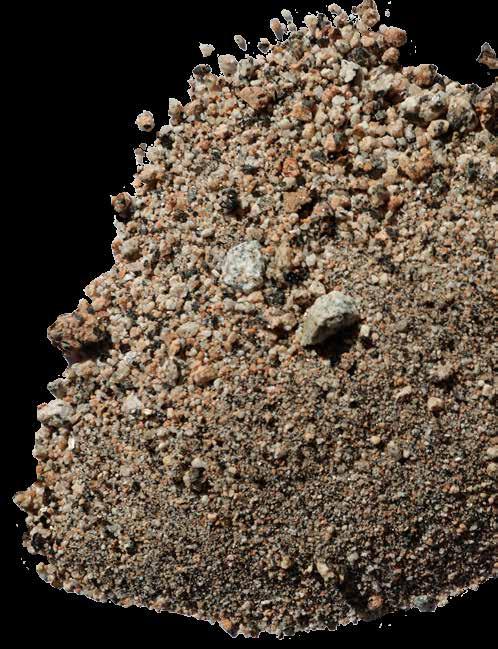

“It could easily take millions of years for a sand grain to make its way to the open coast.”
1pt filtered/purifed/ water from one that feeds to your town.
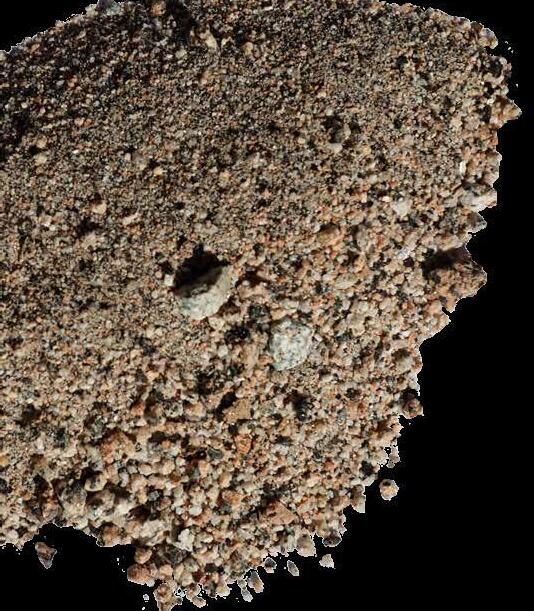
1bunch of leaves from an native to the area where your river meets the sea Francisco.)
A dash of local honeyRim the glass with salt from the Muddle with a small, washed from mid-way down your river.
Please collect all the parts yourself .... no matter the time.
the headwaters of a river -
edible herbal plant, (like minty yerba buena - the plant of pre-colonized San
(perhaps befriend a beekeeper)? sea where the river lets out.
pebble of granite, sourced
Take a slow drink.



Friant, California is a small town that maybe mostly operates around the dam. It is hot, 100 degrees, and the water of the San Joaquin swells at the base of the dam to a temperate lake with motorboats and geese. The granite basin floods and crumbles. Here rock is most visibly in a state of decomposition. The shore along the lake, a river swollen at the thigh, is crumbling granite boulders and large particles, like a confetti party of feldspar, quartz, mica - the composition of a mountain disassembling.
Along the water lines the sediment is sorted by weight, the fine magnetite eddies around the waveline, the flecked mica in river patterns strata-ed above that, and then the coarse crumbles of granite - like a high montane boulder field in miniature. A stratified aerial view of the movement of the grains this season, sorted according to weight and size, by the lakes lapping waves.
We’ve flowed hundreds of miles, carried life, waters and grains, the decaying bodies of plants and animals. Everything muddies by now. Golden mica glints in the sediment-heavy and stuck water.
Dams are traps for water, but also for sand. Here, the mountain sands experience a first stoppage in their source to sea journey.
In the town of Friant I can see the dam from the other side, a high castle wall, which in the right
season, waterfalls down to regulate lake levels.
After the containing dam wall and before the release of the river waters back into their true bed, comes a split and a siphoning off of waters to the Madera and Friant Kern Canals. These two irrigation aqueducts serve the industrial farming of Central Valley. At times, the dam and these thirsty channels run the river dry for 50-60 mile stretches at a time, affecting whole ecosystems.
Gary Griggs is a professor of Earth Sciences at UC Santa Cruz who studies coastal erosion. I ask him about the stopped up rivers and sediment budgets and he says the sand we lose to Central Valley river stoppages don’t necessarily cause direct cuts to Ocean Beach’s sediment income. Ecosystems are not always so simple or so cause and effect - making it easy to ignore & hard to see. The river flows after a dry section and picks up all the load its force can handle and erodes out the river bed in that place with quickened force.
The beach, a skin, a river bed, a soil layer erodes and accumulates and devours itself whole by water, by wave, stuck to sticky traps in currents and the sweat in the crook of my arm. I get in the river and watch the dam. I walk on the highway and look down into the Madera Canal. It flows themepark aquamarine, the river black and heading into Central Valley. It is so hot, 100 degrees, and everything is borrowed up, until almost not at all.
Visit a dammed river’s lake (take a pen and paper.)
Friant Dam and Lake Millerton are one possible example in California. Fill yourself (your shoes, hands, pockets, hair or....?) with sand from its lake. Wade into the water, as you like.
Take notice of what you feel here? heavy feelings, stuck feelings, interrupted flowing or something else maybe?

Closing your eyes is nice. Breathing is too. Try some imaginings, maybe the brief & clumsy movements of billions of scattered, sloshing grains - imagining you are one of these too, bumping around minutely with the lake water waving, but not going anywhere much. Just a slight circular swirling, slow water eddies you around.

A friend, Christine Lee, goes with me in search of the river again. 85 miles northwest-ish of Friant and 112 miles from where the San Joaquin yields into the San Francisco Bay, lies a small pocket called Great Valley Grasslands State Park. It’s August and hot like a desert.
By creeping off trail, poking our way through tall scratchy grasses, and carefully coming over a downed barbed wire fence, we find the river and can touch it. Here, in this place, it is 6 feet wide and 1 inch deep. Its movement is imperceptible. There is hardly any water in this river. I wonder how close we are to one of the official dry spots. The river and ourselves are far from the energetic mountain scene with tumbling grains of crystalline granite in fluid decomposition. We poke our toes in the mud, silt flumes around feet and mud sucks us in, but just a little, and mica waves its sparkling hello.
I mention the metaphor of sediment budgets that Gary Griggs shared. Christine is marveling at the golden, black flecks of mica glinting in the sun. Market-driven modes for getting people to care don’t seem all that interesting or useful to her. She’s focused in on the lives being lived in tiny submerged zones and advocates for amplifying the less visible.
How to think like a mountain? How to know like a sand grain? For now, we greet this sandy layer of granite pieces - signs from a familiar geological friend.
The Great Valley Grassland is a floodplain that preserves several species of native grasses and a shrubland ecology that is unique to a healthy San Joaquin floodplain. This tiny fragment is a preserved island of what used to be a continuous land of riparian plenty and home to San Joaquin pocket mice, giant kangaroo rats, hares, rabbits, California ground squirrels, gophers, grizzly bears, gray wolves, coyotes, mountain lions, ring tails, bob-cats, San Joaquin kit foxes and over-wintering migrating birds by the thousands.
Islands of preservation like this one have a ripple effect from source to sea and enough islands can eventually become long corridors, as restorationists like to say, and enough corridors can eventually become a continuous place again -- if we decide to try.
It turns out that those 60 mile dry spots in the San Joaquin River became a stain on public consciousness. In 2006, the San Joaquin River Restoration Settlement was established, ensuring that the river flows in critical spots to ensure the passage of life. Sagely, salmon are the selected keystone-species here. Providing for their habitat needs means allowing rivers to flow from source to sea. A claim which means habitat growth for everyone from sand, to native grasses, to kangaroo rats, and water dependent farms of Central Valley.


I write to the San Joaquin River Restoration Program to see about the current river levels and flow in the summer of 2018. Their response is a mix of imperfect fixes, slow bureaucracy and hopeful ways forward with collaboration between restorationists, state politicians and farmers. In short, they say that the section of the river from the Friant Dam to the confluence with the Merced River (in Ferry Hills, CA) will be kept flowing except during critically low years, in which case small parts of the river may go dry briefly. It’s imperfect progress, but it’s good to get started somehow.
A few miles down the road at Fremont’s Ford Boat Launch, the river widens and reaches darker depths. People are fishing, boats are floating.
This river, full of water again, snakes 100 miles more up to the delta, but until then, there are few places to be with it - a few roadside fishing spots, a boat launch here or there. Really, it is still sitting behind a patchwork quilt of privatized farms and seeing the river along this stretch is real hard unless you’re doing so by boat. You can do this theoretically, since the river bed is public no matter the state of the land beside it.
Industrial farming causes this lack of connection to the river. It’s a weird design and too big of a wormhole so, for now, I’ll try to re-orient to the
slow millenial tumbling of grains: quartz, mica, feldspar.
A clear and yellow grain slowly turns under itself after days of water drifting over. The top-heavy and miniscule peak finally persuaded to collapse and roll over - in a year an inch. A black and glassy mica pixel piles up alongside the clear and yellow one, many years later -- silently streaming on the scale of millenia.
There will be a meeting at the sea later this year. I will see these grains or perhaps their (much) older counterparts. Almost there. Pacific intentions. I can feel the oceanic wind poke holes through the dry air of the valley floor.
We drive back by car - a mobility that is stunning by comparison, a fast romance that misses the point. I see a flash peripherally - a red tailed hawk lands and is perched atop a powerline eyeing a gopher. Driving west feels luminous like floating into the sun, glowing above the coastal hills, shimmering grasses expired for the year. Everything is golden, bursting or burst already from the profusion of light and heat and waterless days.
Pay a visit to a Delta ~ collect a pile
Dip your hands in the delta’s river.
Starting with the tips of your fingers. Hand slide your hands into the water. of liquid.
As you go, close your eyes and let to you about where it has beenvalley, and now resiliently, affluently, into the delta. for as long as you like.
Your hands are coated in this water
Coat your river hands with sand
Sand is like skin because it is the protective layer .... land from the forces of the sea. The particles cling and A crust of granite, feldspar and mica safely
Through the day, try to protect this skin around skin. Hand in pocket, embark on a careful
Write about what goes right and
of river sand. Set it aside for later. Slow.
perpendicular to the water’s surface. Slowly Letting it surround your skin in a perfect coat the water transmit some images
a mountain waterfall, the headwaters, the Sit here taking in river images and its journey. Handshake. from your pile. Sand skin. the porous membrane that buffers the bedrock harden, mineralizing around your hand. wrapping your skin.
protection. Sand on hand. Sand as Hand as land. anti-erosion day. what goes wrong with this experiment.


The wind is from the ocean and the land - powerful and chilled like the Pacific and hot like Central Valley. The water is salt and also fresh. This is a place of mixing and convergence.
The San Joaquin River gives way and meets with the Sacramento and also the backwash of the Pacific Ocean, then into the oval chamber of the Bay. All this but not yet, we’re still at the meshy Delta place.
The Lange’s Metalmark butterfly is an islander. The only place it ever lived in the whole world was the Antioch Sand Dunes -- a 55 acre range of land beside the San Joaquin River just before it becomes the bay. The land here was sand dunes. They were 50 feet tall and now they are not dunes at all. Now, they are a sandy covering on a steep bank and a small bowl of a valley covered in sand and encouraged native plants.
 Adam G. Clause
Adam G. Clause
The host plant for the Lange’s Metalmark butterfly caterpillar is a specific kind of buckwheat plant with long spindley arms that reach 2 ft above the little paddled leaves - Eriogonum nudum psychicola. Small pompom buckwheat flowers, yellowish and modest, adorn each arm. This scarce plant, who’s seeds rely on weedless sandy expanses and coarse soils for germination, is the only one that can sustain the lifecycle of a Lange’s Metalmark. With the endangerment of the sand, comes the diminishment of buckwheat and the loss of the Metalmark. This butterfly neighbor is listed as critically imperiled.
No sand, no buckwheat, no butterfly.
In 1903, the Holland Sandstone Brick Company opened in Antioch, California. The company relied on the Antioch Dunes’s vast riverside deposits. They mined sand from the dunes as fill to forge the brickwork.
In 1906, after San Francisco’s earthquake, appetite for construction materials boomed and bricks were especially coveted because they couldn’t burn down like so many redwood victorians had. The sand of the Antioch dunes was overmined. The dunes were flattened during that period and the Metalmark population declined alongside a San Franciscan building boom some 50 miles away.
We’re in a time of deficit - sand shortages the reality, even though sand is always seen in a multitude. This is bookkeeping on the millions of years scale - geological time’s accounting. Maybe we can understand how to budget if it’s in the language of the market, but can’t we feel love some other way?
The river carries the pebble, tumbles and saltates it, rounds jagged edge, diminishes its size until it is between .0625 and 2mm, at which point, it can be scientifically called SAND, be it decomposed granite or a sack of flour. The sand was once a landslide, a boulder field, a thing labored upon ceaselessly and completely by non-human workers until it became the size of a small grain, a geological seed.

a mercurial and relentless sea without becoming it.
The Antioch Dunes Refuge Manager, Louis Terrazas, says that they are rebuilding their dunes with sand dredged out of the San Joaquin river bed by the Port Authority of Stockton. The natural sand accretion becomes a hindrance to shipping, clogging underwater lanes. Here, a compromised trade deal was arranged. Through an oddly human cycling of resources, a living shoreline is being created.
It is imperfect, but perhaps, ecological restoration can be an act of mimicry and mimicry can be an act of relation and care. Re-building places can offer a neighborly gesture that doubles as a multi-species survival strategy emerging creatively from the ruins.
What was here and how can we mimic the conditions of an ecosystem before it was used to the ground? Can we get Metalmarks to move back in to their sand island town?
This is the slow way that sand reaches the edge and the transition zones, the skin of the land. The skin, the protective membrane, the way to live beside


Watch water moving here in the convergence.... between river blending way to bay Soften your eyes, let images enter in - like photographs taken and stored to your memory.
What/who is of value here ?
GEOPATHIC TENDENCY 6


Visualize a party of community members (of various degrees of sentience).
With the community members in mind, begin to allow yourself some movements just your body keeping good company, like an unspoken hello... a companion dance...keep going as long as you like.

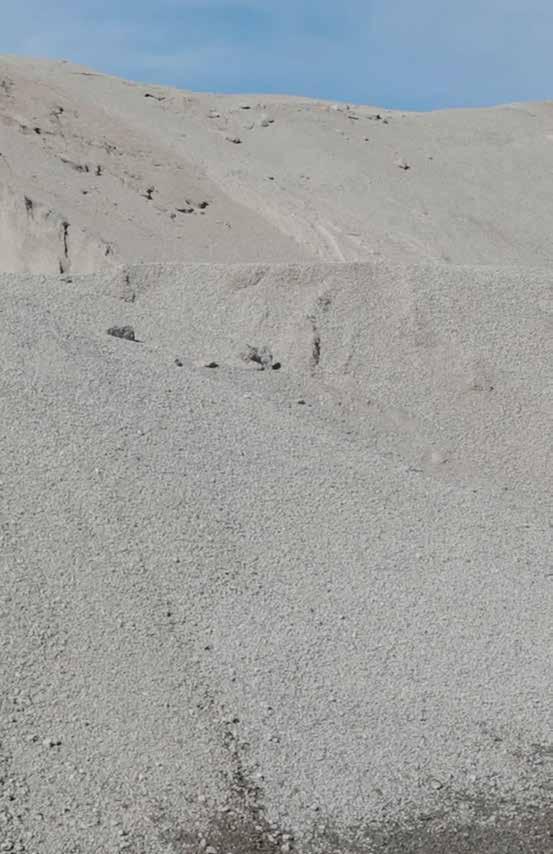
The San Joaquin softens into the Sacramento River and then enters the Bay through the Carquinez Straight. This is a mixing place and meeting spot for rivers, oceans, commerce & geological remains.
Underwater in the San Francisco Bay, 33 foot tall sand dunes speak of old San Francisco, the peninsula that was once fully covered by a rolling range of sand dunes, glacially carved from the Sierra plateau during the Pleisteocene. San Francisco can be seen as an ancient downriver deposit in the shape of a windy dune-scaped peninsula in the fog.
Still eddying around the San Francisco Bay, a grain might get caught and swept up in another story. On the north side of Alcatraz Island are the sand mines operated by Hansen Corporation. These fluid, often unseeable mines exist below the water’s surface. Occasionally a dredger signals extraction, but often these everyday mines are hiding in plain sight.
If I follow the grains I might get caught in the sucking vortex of a dredger and be heaped on a barge, taken 6 miles south down the bay to Pier 96 -- to the concretelandia of Bayview’s Cargo Way. I might follow a concrete truck carrying a slurry of sand, water, lime, gravel and cement, en route to a construction site downtown or, I might fall through to the depths of an underwater range of sandy dunes and eventually get swept to sea to become the beach at the city’s edge.
Concrete is the language of the built environment itself a storied and geological layer.
I talked with Erica Maharg, the Managing Attorney from San Francisco Baykeeper, an environmental organization dedicated to defending the Bay from environmental threats. Maharg was the lead lawyer on a case which filed a lawsuit against the State Lands Commision for their leasing of San Francisco Bay sand to the concrete production company Hansen. Hansen has been operating a sand dredging mine near Alcatraz and Angel Islands in the San Francisco Bay since the 1960s.
Maharg points to the city skyline behind us and says: “Sand is a pivotal part of our urban environment and the way that it looks, because it goes into concrete, so all of the high-rises that we see, everything, all the roads - sand is there.” Sand and gravel make up 60-80% of concrete.
The lawsuit, lead by Maharg, has been back and forth, in and out of the court of appeals 3 times as of Fall 2018. This back and forth is based on various interpretations of the Public Trust Doctrine. Maharg shared that the Public Trust Doctrine is common law in the US and originally came from Roman Law. The Doctrine tries to define land use, which places and ecosystems cannot be owned, and the responsibilities that a government has to its people. Of course, it’s all very up for interpretation.
Maharg paraphrases a piece from the Public Trust Doctrine that she is turning to in this case saying that “the water and the land underneath the water are public trust resources and when the government makes decisions that impact those public trust resources they can’t do it in a way that alienates or prohibits the public from being able to use and benefit from that resource.”
While the State Lands Commission does not believe that leasing sand violates this Trust, Baykeeper would argue that sand is too slow-to-renew and that leasing it is actually just the selling off of coastal land wholesale. This
is one of the main causes for the extreme coastal erosion seen off of San Francisco’s Ocean Beach.
What could be more alienating than the literal loss of (home)land?
Personally, Maharg doesn’t expect sand mining to stop entirely, recognizing the need for building materials, housing, and roads, but through her legal work she is pushing for mining at sustainable levels, more transparency in mining activity, and corporate responsibilty towards the geologically scaled impacts of human industry.
The sand is our meshy transition zone and without it Maharg worries that rising sea levels may flood our landfilled edges. She also points out that these environmental troubles typically impact the most economically vulnerable frontline communities the hardest.
Erosion patterns here are literal and metaphorical, at once loud and frightening, while still being hidden, underwater.
Erosion patterns as a sign of home?

Take a slow walk by concrete factories
Cargo Way at Pier 94, Bayview, San Francisco, CA is a possibility.
Surrounded by just your body, it helps to let your eyes get soft. Ask them to scan the scene -- like a camera panning and absorbing light & shadow & being & movement to memory.
What’s there/who’s there/how’s there? Take notice as you will.
mountains & machine sounds, vibrations, and workers, resilient plants, animals or humans, buzzing, humming, beating vibrations.
Let the movements, scales, speeds & impressions of the place enter your eyes & body.
Find a place to stop & rest atop a concrete place : a pile, a slab, the side of the road itself (not the concrete moutains, they landslide dangerously.)
3 breaths for feeling your skin loosen into billions of separate particles... solidity shimmers apart - cracks, fissures open slow in a timelapse.
Let your breath sink down and down into yourbelly and down into the concrete you’re paused on. Let your breath sink and trickle down - a crack in the crust to the soil/sand/land below the concrete layer. With each breath the mountain becomes your lungs. Hardened. Concrete particles swirling invisibly within. Concrete particles - sand, granite, Sierra Nevada.
inhale / exhale / your body
crossfading to stone with each breath. In bits, crumbles & cracks, eroding & disintegrating.
Allow your breath to flow around down there through the cracks & fissures, below your body -- a small sandy slide of your body streaming.
Close your eyes and listen to the geology beneath the concrete. Cracking, tumbling, shifting of pebbles, of land, of water, of sand.
The bottoms of your feet break down into a dust, disintegrating layers shimmer off you, and like your breath before, trickle downward through cracks & fissures in the concrete. As a dispersed layer of sand you’ve avalanched down & down to the sand/soil/land.
Breathe into a disintegration past the humanmade layer. Your whole body is attached to a downward drift. You are going. A million tiny bits slipping through cracks, fissures, & on into the beneath -- well past the concrete crust. Little particles sifting through larger boulders.
Notice what’s there below.
Let the movements, scales, speeds & impressions enter your body
: sand, granite, mud, bay salt on your tongue, snails, stingrays, an Ohlone boat, toxic radiation, a forgotten seed bank, Suaeda californica, coyote bush, pickle weed, avocet bones, the stinky health of a mudflatall floating, dispersed in a gooey mud with you.
Spend as long as you like drifting around down there, maybe a minute or two: listening, smelling, seeing.
3 deep breaths and gather your disintegrated self. Solidify and mineralize.
The soles of your feet cap you back complete and together and you are standing on the concrete you embarked from.
Slowly open your eyes. Breathing, seeing: urban, industrial mountainy, sentinal.


The Concrete factories along Cargo Way in Bayview, San Francisco are whirring by dusk, spinning a dull and steady deep base - the low hum of working all the time. Giant sand mountains are built as the barged-in sand is sorted from stones, bay mud, and other parts not needed. Conveyor belts and sort nets make separate piles for each particulate size.
You can get close to this and see the industrial back stage because the Audubon Society has secured a small strip of land behind the CEMEX factory and is working it as a restoration site. The land is secretive and unmarked. When I visit I always feel like a trespasser through private and contested industrial territory. Jumpy nerves accompany me. In the darkening dusk the sand sorters whir on and the sun sets behind Twin Peaks and the shorebirds coo and a seal looks at me looking at the machines. The toxin sponging pickleweed is thick here, the gumplant and coyote bush too, the endangered California sea blite (Suaeda californica) - all planted to help restore a wetland. A wetland as another edge space, a skin, a muddy membrane, that critically ensures that land stays land and that it doesn’t become an eroded slurry lost at sea.
I visit again by daylight. I look into the factories, wanting to know how it all functions. The workers are here by day and they watch me back from stopped bulldozer cabs when my gaze gets too long, too direct. One day, I spend 3 hours on this

little strip of land filming and observing, a duration which eventually prompts the approach of a CEMEX ambassador of sorts. As he walks over to me I feel uncertain, like a trespasser, yet on public lands. I think about the sensitivities and politics of this very contested industry, the local lawsuit, and the global-scaled civil wars and violent sand mafias all fighting for sand (to produce concrete) in countries like Morocco, Malasia, India, Indonesia, and more quietly, here.
The ambassador is friendly but probing. He wonders what I see in this muddy flat and why I’ve spent so much time there today. I talk about sand, my curiosity about its story. He mentions that sometimes people come around here to protest against the sandmining, or to collect information for a lawsuit that’s going. “Everybody uses concrete, you know?” he says, shaking his head.
Eventually, he tells me his name (we’ll call him Eduardo,) and he tells me that he is the “Sandman” around here, solely responsible for unloading the sand off the barges recently mined up from the bay and settling it into mountainous piles. I ask him how he got his job and he says he taught himself how to be an auto mechanic and worked his way up to bulldozer operation from there.
I ask if he lives in the Bay Area. He just laughs. He says he can’t believe the cost of housing. He has saved up his bit to buy a house in Modesto; where

he grew up, where his family lives, where he too lives when he is off from work.
“You commute?” I ask. “No” he laughs, “I crash with a friend in Alameda when I’m on duty and then go back to my house, my family, my kids for weekends.” He assures me that his sandman pay is good in comparison to anything available in Modesto.
We talk more about housing strangeness in the Bay Area, the pride he takes in his work and his kids. We shake hands and part ways. I can’t help but think of the mythos of the Sandman - sprinkling sand as fairy dust onto the sleeping eyes of innocents with a dream.

This particular fairy dust is a mining operation that so wholly erodes health, habit and homeland but it is the work available. It is economically viable here and now.

Walking out on Cargo Way the concrete trucks parade all day - to and from the factories, out to construction sites, relentlessly. The city is in a boom of building. The road rumbles and shakes all the time. The air is clouded with toxic dusts and particles.
No one is walking here with their mere bodies.
There are cracks in any sidewalk and life finds a way through. One of the concrete factories is Recology’s Sustainable Crushing facility. They take in the remains of demolished buildings from the Bay Area and process them back down into aggregate parts of sand, gravel and particles just the right size to re-make concrete with - a possible path that doesn’t rely on extracting new resources, in recognition of the limits of sand.
The director of the site tells me that there is a flock of Canadian geese that overwinter here in the gravel hills, coyotes roam the valley floor by dusk to hunt garter snakes and gophers, a red tailed hawk lands on the manmade cliff face as we talk. A herd of domesticated goats (who work for hire around the city clearing properties of bramble and weeds) lives just behind the site and sometimes wander through, he says. He loves to bring his dog here when the bulldozers are done for the day, to run big circles around composed mountains, chasing geese and little mice. Resilient urban ecologies emerge and find a way toward liveliness.
Further south just around the bay’s bend, still in San Francisco’s Bayview neighborhood, is Literacy for Environmental Justice where Anthony Khalil is an Environmental Scientist and the Community Engagement Director.
We are sitting on the old San Francisco 49ers tailgating lots of Candlestick Park (now a State Park by the same name) amidst summer-dead fennel, bristling August grasses and another concrete recycling facility churning behind us. He points to one stand of flowering grass, tall and bent, spiking wheat-like
flowers. “This one here is native Creeping Wild Rye (Leymus triticoides),” he says and adds that its being here on this compacted, impacted old parking lot tells us that the bay water line was once much closer to where we’re standing now. This one, this grass, is adapted to living in salty, moist soils often at the water’s edge. From where we are the waterline now is hundreds of feet away.
Creeping Wild Rye forms solid and dense underground root systems which allow it to live stable lives, close to the water’s mercurial edge all while securing slippery banks from soil erosion. The resilience of this long stalking blade, really there is so much to learn about the lives of other species and how they provide for my own. Creeping Wild Rye is not really a sand dwelling native plant, adapated as it is to dense, wet, nondraining wetland soils, but this particular slender stem of Wild Rye is bound up with our sandy place most certainly, as it has watched its home ecosystem shift and change with the times from a wetland to solid concrete fill, which we know to be sandy in origin.
From the perspective of roots: Anthony guides me through the changes - this small strip of bay coastline has been until now: open Bay waters, transitional tidal wetlands, a rolling range of sand dunes drifting all the way over from San Francisco’s Pacific side, an Ohlone home place & territory taken by white settlers. Today this bay edge, a former wetland, is solid filled land which houses Candlestick State Park, the Bayview and Hunters Point neighborhoods - historically black & under-resourced, polluted by a deeply radioactive former naval shipyard, and the only seat of the city’s heavy and polluting industries.
This Creeping Wild Rye is living from a bedrock of landfilled concrete, made of sand, but frozen midshift. This Creeping Wild Rye is living on open waters - the former bay filled in to make more land, a rod through the spine - not a critically flexible transitional place at all.
This Creeping Wild Rye grows through the cracks, in a concreted earth, while watching the progress of sand-dependant industries and concrete dependant “urban revitalization” of the sort that often spells displacement for Bayview’s neighbors. Anthony points out that the burdens of industry and development really only happen in certain areas. “Citywide, when the concrete comes from CEMEX and Bodie and they deliver it, they’re coming only from this neighborhood.”
Sand is everywhere here, in unnatural aggregations. Anthony says : “I’m thinking too a little about development and how this is a real epicenter of all the building that’s happening in SF. All the coming in of resouces and then resources that are here that are being extracted from the bay and processed here in our backyard and then inhaled by residents in swarms of particulate matter.”
Bayview experiences the environmental injustice of continually high levels of PM 2.5 particulate air pollution. Asthma rates are 4 times higher here than in the rest of the city.

Sand is for land, not meant for air or breath.
I am still trying to follow grains of sand from source to sea and at this point I might find myself: a skyscraper demolished to dust caught in the lung.
It’s getting harder and harder to trace all these possible pathways for our tumbling decaying saltating grains: mountain dusts, (an atmospheric condition) a cloud in quartz, feldspar, mica.
Anthony tells me about how much he pays attention to “the smallest things in life” (like sand) and how they affect us. He says that sand was once a principle engineer of our city. Now sand seems to be the principly engineered. I like the idea of non-human engineers. What would that look like?
Anthony says that the living shoreline approach is what makes sense to him. He mentions that beyond sand mining, historically there have been times when loads of bay sediment were dredged up to deepen our shallow bay for the non-stop international shipping it supports. This dredged up sediment is often carelessly disposed of in deep oceanic places that don’t need it. He wonders how we might invest that dredged sediment into a thoughtful living shoreline - a thriving ecosystem of the kind that also has the potential to create thriving social landscapes.
“Those of us that take stewardship into our own hands, we can mimic some of these natural forces, to not to destroy habitat, but to create habitat.”
Anthony reminds me of the ABCs of a healthy environment. It means simultaneously tending to the abiotic (non-living), the biotic (living) and the cultural (human-made, social.) He wonders at how people can create a culture of balanced collaboration with the A’s and the B’s, since everyday the A’s and the B’s support us and our living.
He points to breathing as just one simple and crucial example that I know I ignore daily. “The phytoplankton and the zooplankton and the bacteria and the plants that are present in these [wetland] ecosystems .... contribute to 1 in every 3 breaths and at the same time, other breaths might be impacted by the flip side of that which is particulate matter 2.5, particulate matter 10, and all the indoor air pollutants and combustible matter that come from industry and our cars.”
Right. Plants are why we can breathe at all and in a place with industrially compromised air quality and paved over wetlands, restoring wild plant communities is an act of caring for our abiotic and biotic neighbors, as well as being practical survival.
For Anthony, working to restore habitat around Bayview means restoring oxygen, soil, and bodies to health, but also restoring “all the connections and all the cultural histories surrounding each plant.” Ultimately, it means restoring a human sense of belonging to the ecosystems that house us.
Anthony’s talk of the small things brings me back to the various species of sand loving buckwheats that host the endangered Lange’s Metalmark Butterfly in Antioch. San Francisco has a version of this story too with the Green Hairstreak butterfly whose host plant is also a native buckwheat. With the loss of sand dune habitat in San Francisco, buckwheat populations declined and the Green Hairstreak was for a time thought extinct. The more I look at it, the more I see that butterfly counts are an indicator of broader species endangerment, the unseen effects of sand mining, and subsequently our own health and air quality in real time.
In roundabout but deeply connected ways, the presence (or not) of these two tiny species of butterflies is an indicator of stabilized sand-lands which have direct ties to our ability to breathe.
I begin to see my entanglement with butterflies more clearly and understand what their health and population say also about mine.
West I go toward the Ocean, butterflies and breath leading me on to the Inner Sunset neighborhood. On a continuous line of bluffs that used to be sand dunes there is a corridor of habitat built for the endangered and endemic Green Hairstreak butterfly. This corridor is a project led by Nature in the City, an organization that creates gardens and native plant habitats in medians, public parks, stairwells, and reclaimed sand dune ecosystems. The Green Hairstreak Corridor is a network of medians and parklets restored with native California coast buckwheat and seaside daisy which both act as the host plants for the larvae and adult stages of the Green Hairstreak butterfly.
On an aggressively windy February morning, I see coast buckwheat and seaside daisy, but also dune tansy, California poppy, lizard tail, coyote bush, bush lupine, California sagebrush, polypody ferns, stonecrop and phaecelia.
Despite this inviting floral home, I can’t imagine seeing a bright green, nickel-sized butterfly, like a slip of paper, against this windstorm of a day.
It makes me think that I’d like to practice feeling as vulnerable as I actually am, an animal who forgot. I might do well to practice thinking like a butterfly too.

I want to plant a sand garden and watch the reverberating effects. I am starting by tending to a wild spreading of endangered & native California Dune Tansy (Tanacetum camphoratum) in my backyard. The spreading and sprawling by way of wiley rhizomes and a taproot seeking back in time with every inch grown - deep time, deep place searching. The root finds memory of my backyard as not land, but instead as the bed of a pre-colonial lake; fish and tadpoles swarming, the squeaky bass of pacific chorus frogs filling a valley, and then an abrupt stoppage as the lake was filled with local sands, compacted, turned to “land” to make way for development yearnings and property lust.
My landlady, who has lived in this building since the 1980s, tells me there used to be a lake 1 block away from where we live. She tells me it’s filled with sand now, of course. She tells me we live in a liquefaction zone in earthquake country.
Planting a sand garden on landfill, a liqufaction zone, and hoping for the very best seems the very spirit of this place. If the earth quakes here it will want to reclaim my backyard from its imaginary solidity. The root of the dune tansy seeks back in time absorbing montane minerals to build strong cell walls, and then, through its very being, knows the origin story: the Pleistocene-era Sierra Nevada were bodies being made - carved and sculpted in timelapse by active glaciers in flow. Mass submountains of sediment were confetti-ed into being - sand and silt, by river and wind and time. These particulate piles shifted - a drifting blanket laid bit by bit over Yelamu/ Yerba Buena/ San Francisco. Until it was a rolling range of dunes composed of mountain dusts, arrived en masse during a time of glacial timelapse.
I am living on sand and ghosts of water. This wasn’t supposed to be land and as follows, the land buzzes with the energy of impermanance, restlessness, and propels me to my feet. I can’t sit still here. I can’t believe it’s my place, that I’ll be allowed to belong. So, I invest in a practice of tending to taproots, as an attempt to stay put.
My dune tansy colony started on a coastal hill in San Francisco’s Presidio. My friend, Ildiko Polony, the Native Plant Nursery manager at Literacy for Environmental Justice, propogated a small ensemble from these cross-town neighbors.
This plant is native to San Francisco sand dunes and is now endangered given San Francisco’s historic sand dune erasure. The dunes that do remain at Ocean Beach are so overrun with other dune tamers gone invasive (like South African Iceplant) that dune tansy are rarely spotted and namely on restorationist-led life support.
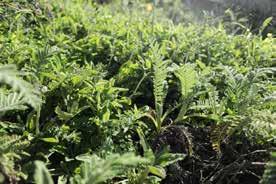
Dune Tansy sports a friendly yellow pom pom flower with feathery leaves and it smells of camphor and sage. It grows happily in soils many agriculturally-oriented minds call “poor.” But “poor soil” is just another word for sand, and calling sand poor is just another way of devaluing the kind of land this place is made from.


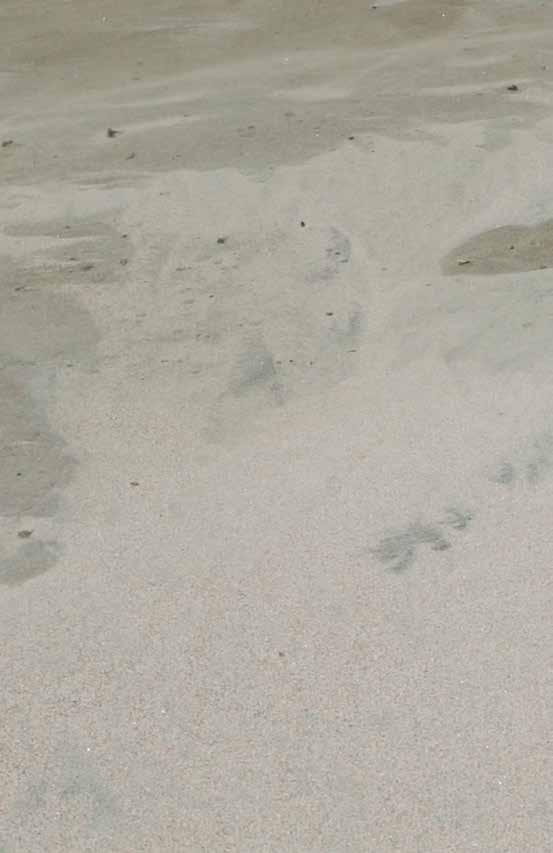
Take 5+ friends to the beach separate from one another.
Lie down flat on the sand
Flat as can be. Closed eyes.
its direction, its force.
The wind tumbles you - little grain. Begin to roll slowly.
Feeling which parts of your skin lose & regain contact from the sandy ground as you rotate. Notice your spine quietly spiraling. Skin on grain. Grain as skin.
Think of the others, their skin on grain, skin as grains too. Feeling what they are feeling - we hope to accumulate - to duneify.
You may come across others - rolling companions. Try staying bonded when you meet.
Accumulated, piled. Sticky sand building up. Somehow rolling together ... can you?

Small Accumulations...bit by bit, until all the people are together, a pile.
A small mountain made of multitudes, accumulated. Assembled.
Take many friends to the top of a dune.
Throw a handful of sand against the sky.
Try rolling down the dunes in the pattern of fallen sand. GEOPATHIC
A scattered drifting disassembly of mountains. Disintegrated edges as you roll.
Loosening up as a way of friendship.
The South end of Ocean Beach in San Francisco is an odd anthropocenic geological site. The layers go: Pacific Ocean, a narrow stripe of sandy beach, contained by a humanmade landslide of concrete, ballast, sand bags the size of king sized mattresses, construction materials, and then two versions of the Great Highway - one that’s a discontinued ghost, crumbling off the edge of the continent and one that is still being used just slightly east. I ask Patrick Barnard of the USGS, from the geological perspective, how do we read all those different layers of human and non-human geology all jumbled together?
He answers that this construction debris landslide was a quick response to a particularly harsh El Niño in 1997-98. The crumbling human-made landslide a way to fortify the Great Highway in the case of much stronger than usual winter waves.
The winter beach and the summer beach are hardly the same place. Beaches breathe. They expand and contract dramatically over the seasons. Patrick says that our seasonal wave climate means small waves in the summer that then double in size on average each winter. Large winter waves and storms take sand away from the beach and store it on bars, then returning this sand to the beach each summer. Patrick and USGS teams have done monthly surveys on Ocean Beach since 2004 and have found it to erode temporarily, about 65 ft, each winter.
In all this, the Great Highway is a constrictive belt that doesn’t allow for low-stakes natural erosion and movement of the beach. Patrick says that at this point: “The ocean wants to be further landward and naturally it used to be
further landward. Around the turn of the 20th century the Great Highway was extended considerably along that entire stretch, I believe to basically create more land and a highway and so, naturally the shoreline does not want to be there. So, if the beach has nowhere to go, it can’t erode any further landward, it runs into a wall, so when you have a kind of ridgid structure it tends to amplify the scouring potential of the waves and the beach tends to erode more rapidly. Whereas, if you have big wide beach that has lots of room to move back and forth it tends to disipate the wave energy.”
Patrick shares also that: “Outside of water, sand is the second most valuable natural resource in the world. There’s a huge demand for sand. I mean the whole city is made out of sand when you think about it: the buildings and all the concrete foundations, and then there’s the natural sand, and the sand that’s been used to build up the whole area.”
“The whole Bay Area is really analaogous to every development story in the whole world. We try to tame nature. In the case of San Francisco, its both for flood control and these unruly sand dunes. So we had this incredible resource of sand and water and we tame it and now we’re realizing we need these resources again. We need sand and we need water.”
The need for sand and an extractionist relationship toward it is part of a global crisis in sand shortage and the ensuing environmental injustices, civil wars, and violent sand mafias that span the globe.


I don’t forget that it’s all sand here, or rather all granite. The concrete debris is from mountains in another life, just like the pure sand and the misplaced headstones and the concrete highway above. It’s all granite.
Everything I see is mountain dust and takes me back to the jubilant Sierra headwaters.
The built city is geological. The towers are sandy. The roads are mountains made flat. What will the ancient/future aliens think of us? How will they dissect our weird geologies?
A walk on the beach is vast galaxies of granitic decomposition. Stars of feldspar, quartz, micalinked to star stuff, as are our own bodies. All of it skin, or skin as simply a protective soil. I am dirt as much as I am a star and that’s all just facts. Sand is an ecosystem, a living system not a blank fantasy place. It’s as storied as the concrete sidewalk which I now know is assembled by geological materials millions of years in the making.
Each grain of sand is a planetthe whole beach a cosmos.
On each grain of sand lives up to 100,000 microorganisms from thousands of differing species: bacterias, tardigrades, plants, small worm and shrimp-like animals. Many of these organisms act as a filter, collecting and processing carbon and
nitrogen from seawater so the levels are maintained and excessive oceanic algae blooms can be avoided - a filter-skin that again makes our very breathing possible. This and other necessary work is done again by whole universes getting on with daily life. These lives are completely invisible to me - which makes it so easy to ignore them.
Scientifically, these organisms are called interstitial animals because they live full lives in minuscule gaps between grains of sand. The gaps are worlds. Rocks are alive. Margins are lively zones and probably the bacteria and micro-critters the most resilient of us all.
As far as Ocean Beach goes, there is a new plan to stop with all the “winning,” to back off and to let the beach do what it likes to with the Great Highway. The Ocean Beach Master plan developed by SPUR (San Francisco Planning and Urban Research Association) in San Francisco, will eventually turn a piece of the road that is too close to the cliff’s edge into a temporary park & native plant habitat for people and creatures. All traffic is to be rerouted further east. Through this move, the Great Highway will eventually give way and yield to natural beach breathing, changing sea levels, erosion, and sand loss.
A sand garden.
A shapeshifting skin for geomimics.
Geomimicry in everyday living could be a practical step towards neighborly survival. The first step I suppose is to even realize where all your neighbors are.

Invisible to my clumsy eye like the lichen eroding granite and the thinning river in the valley and the dust in the lung and sand tumbling forth across hundreds of miles and the tardigrade spinning worlds on the grain of sand now stuck to the bottom of my boot.

Gather at dusk - you & many friends.
Gather on the beach, at the edge, where the water meets the land.
Possible fashions to wear are meshes & laces, a porous barrier, flesh colored, sand colored, or just your skin alone. Flimsy filters vulnerable fleshes.
Drift apart - all along the beach. You’ll start this one alone.
Close your eyes and take 3 deep breaths. Feeling air & breeze passing through each pore as you inhale, exhale, inhale.
You might feel a shimmering sensation that sparkles up your body in between your skin & flesh. Your skin floating off the bone like a flimsy meshwork, loosely tracing around the edges of you. Breathing through the skin all the while.
Invite some images into mind: of the sand below your feet - the grains, softly knit together, with spaces in between large enough for the interstitial creatures, creating whole bustling filter worlds. The spaces big enough for you.

Zoom out & feel your big body trapped with sandy pixels caving in around you. Filling in every gap between toes, bony knees, the crook of your arm, a curve of the belly.
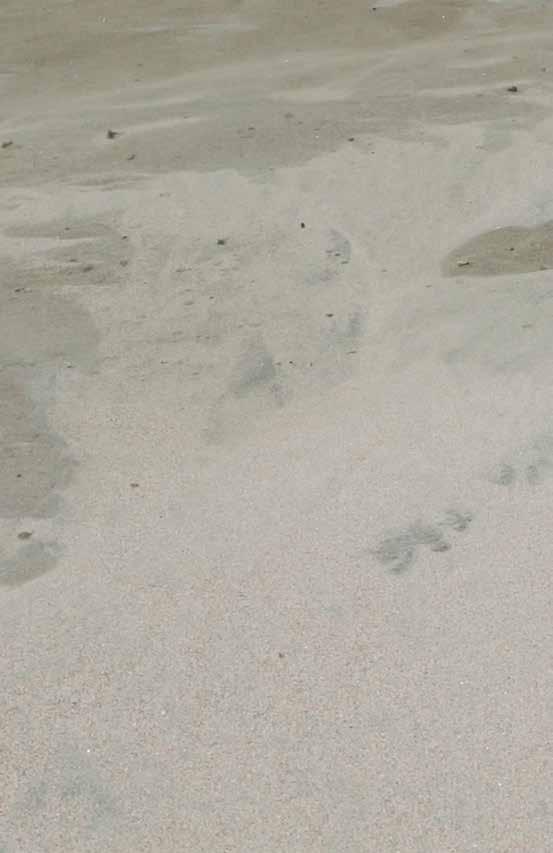
Breathing through the skin to become sandy.
Invite some images in of the others you came here with - a meshwork in dispersion. Send geopathic signals out to them. Feeling in your periphery that all others are there too.
Together, creating an edge space a porous, flexible meshwork.
Breathing through a shared skin in different times, but still together.
Make a slow parade. Walk & walk... on the slow parade that’s hard to witness, because geological time is dispersed like that.
A sensual vulnerability, a scattered highway, sand for a bed, over time carry with you the beginnings of a sand garden: coast buckwheat, dune tansy, seaside daisy, sea thrift, clarkia, coast strawberry, orange paintbrush, & sand verbena.
Another day: plantings too, in the form of waving drifts of rolling sand covering and subsuming the wall of the the great highway.
Plantings too, in the form of a rolling range of dunes merged with fleshy meshy bellies & bodies & swelling valleys.
A great filter-body, a meshwork, a sand-body - to minimize loss of land & disintegration of our edges.
